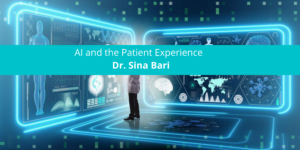AI and the Patient Experience


For all medical care professionals, the patient experience should always be one of our top priorities. But, that can often get lost in a never-ending string of responsibilities. Artificial intelligence, however, has the potential to help improve the experience. Here are three ways how, according to Sina Bari MD, Director of Medical AI at iMerit Technology.
Improving patient diagnosis. One of the biggest boons of AI in the healthcare industry is its potential to help doctors more quickly and more accurately diagnose their patients. One piece of technology helping to make advances in this area is machine learning algorithms, such as neural networks or clustering algorithms, according to SE Healthcare.
Putting provider focus back on the patient. Even though patients should always be a healthcare provider’s top priority, it seems like more and more they are distracted by other responsibilities. AI makes an offer up a credible solution for some of these tasks. Take paperwork, for example. According to a recent report, entering data into electronic health records and other clerical work takes up sometimes half of a doctor’s day, significantly cutting the time they spend with patients. AI technology, including robotic process automation, wearable voice assistants, software-based dictation services, and even cognitive assistants, could soon take over this responsibility for all doctors, along with scheduling and other operational tasks that take up so much time.
It’s making at-home monitoring easy. Wearable technology is helping care providers and doctors monitor their patients more closely — even when they are at home. Doctors can use smartwatches and other wearables to monitor blood sugar levels in diabetic patients. They can watch for patients that have fallen. And they can use wearables to collect key health data such as heart rate, pulse, and weight, so they can use that data to help diagnose and treat patients. These wearables also mean some patients won’t have to remain in the hospital for as long or as often as they may have had to previously.
According to Sina Bari MD, however, with these advances also come limitations that the industry needs to be prepared for. First and foremost, for example, is patient trust in AI. Doctors and other healthcare professionals will need to work with many patients to help create that trust in AI-assisted diagnosis and wearables.
Another significant limitation will be patient compliance. This goes hand-in-hand with trust. There will have to be some significant education in ensuring patients are wearing the monitoring technology, for example.
AI has the power to help transform the patient experience, but it will take some time and a significant investment from the entire industry to get there.
